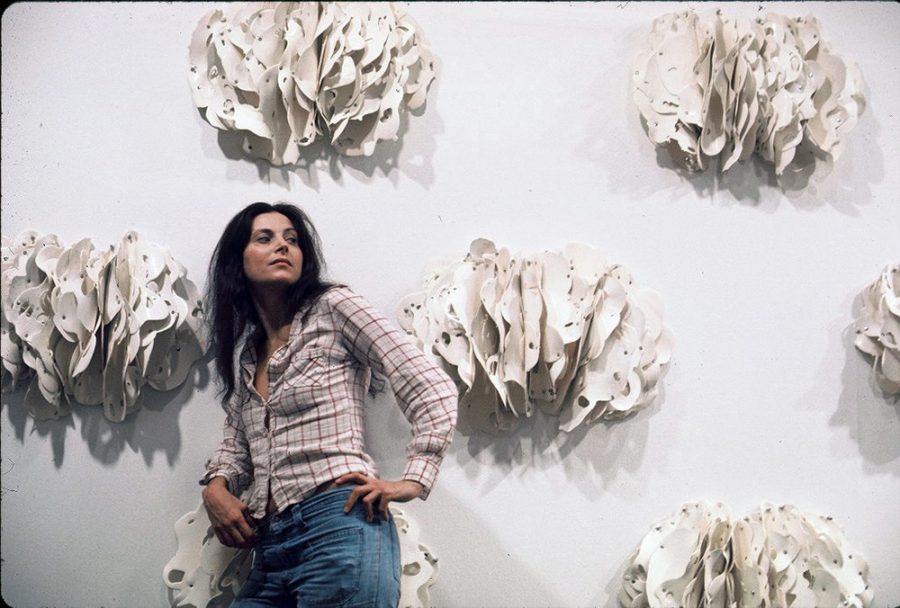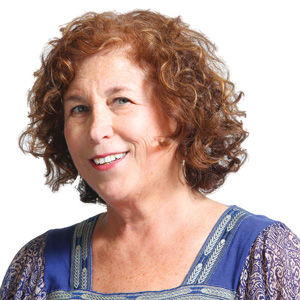New exhibition explores work by Jewish artist Hannah Wilke
Published June 13, 2021
Earlier this month, the Pulitzer Arts Foundation opened “Hannah Wilke: Art for Life’s Sake,” the first major presentation of this unconventional Jewish artist’s work in more than 10 years. Wilke, who died in 1993 at the age of 52 from lymphoma, was considered a pioneer of feminist art, and used her paintings, sculpture, photography and videography to explore issues of sexuality, gender/role identity and femininity. She was known for using her own nude body as a canvas as well as using non-traditional materials such as chewing gum, which she would fashion into a vulva-like shape and then stick on her body.
We reached out to Tamara Schenkenberg, curator of the Pulitzer Arts Foundation, to find out more about Wilke, how her Judaism impacted her art and why she is considered one of the foremost artists to emerge in the 1960s.
What fueled the Pulitzer’s interest in presenting the Hannah Wilke exhibition?
ADVERTISEMENT
Wilke had a prolific career with compelling bodies of work created over the course of three decades that we thought our St. Louis audiences would be excited to discover and learn more about. In addition, the subjects of her work, including gender equality and affirmation of life—with the focus on the vitality and the vulnerability of the body—seemed resonant with the current moment.
The first major presentation of her work was in St. Louis, at UMSL’s Gallery 210, in 1989, so it was wonderful to have that local connection as well. We saw it as an opportunity build on that history and look at the full arc of Wilke’s career; though she is a well-known and influential artist, her work has been understudied.
What is it about this artist that you most admire and why?
In terms of her art practice, what I admire most about Wilke is her materially and formally diverse work. She has always been experimental in her approach, which led to innovations in technique, use of materials and forms. This innovation served a greater purpose in her work and in her life, as she often talked about mobilizing it towards personal and social liberation. I also admire Wilke’s attitude: the unique blend of honesty, humor and deep humanity that she brought to her art and life.
How important was Wilke’s Judaism to her art? What Jewish values did she hold important in terms of how they manifested themselves in her art?
ADVERTISEMENT
Wilke’s cultural experience as a Jewish woman certainly informed her practice, and she addresses it in a few interviews. For example, she talks about how the ritual in Judaism is manifest in her art: “My uncle was a rabbi and we had all that ritual. I think the repetitiveness of ritual is contained in my art; instead of making one sculpture I made 176 [referring to one work that consisted of 176 sculptures].”
This is particularly evident in her multipart works, such as “Baby Blue” or “Just Fifteen.” These sculptures are comprised of many individual forms that start out as circles of clay, which she folds into finished work through a quick movement of her hand to produce different configurations. Through this ritual of repetition, each form is subtly different from the next, yet they are all related through their shared origins as circles of clay. For Wilke this meant to express the individuality and commonality among all people—a concept that she defined as oneness.
Another work in the exhibition that touches on Wilke’s Jewish identity is the watercolor drawing, “Seura Chaya” (1983). This is a portrait of her pet lovebird named Seura Chaya, who flew into her life the day after her mother’s funeral. She and her sister named the lovebird Chaya—their mother’s Hebrew middle name, that describes a “living thing” or “animal.” From then on, lovebirds became a significant symbol for Wilke, representing love, caring, and the cycle of life.
Would you consider her art erotic?
Having started her career in the early 1960s, Wilke made work in the spirt of the countercultural movement. This meant, in part, that her practice was informed by a desire to have a freer attitude toward the body—not see it as a source of shame but a source of joy and pleasure. She wanted to create life-affirming art and has famously said “Eros affirms life.” For her, Eros was not simply the libido, but greater drive for life, joy, self-fulfillment, and human connection.
What is up with all the chewing gum? I heard the way she used it had some connection to the Holocaust.
The exhibition includes a selection of Wilke’s “S.O.S. Starification Object Series” photographs from 1974, in which she adopts and parodies the language of fashion and advertising by casting herself in the role of a model. She wanted to critique how women are portrayed in visual culture—valuable only as subjects to be looked at.
In these photographs she poses with different props and her chewing gum sculptures are placed on her face, hands, and chest. Wilke described these gums as scars, or signs of trauma that signal distress, or the titular “S.O.S.”
For Wilke, as a Jewish woman, these scars connected to, among a number of other meanings, the marking and othering of Jews in Europe during the Second World War.
Here is a relevant quote from 1985: “As a Jew I would have been destroyed had I been born in Europe. It’s incredible to think this happened during my lifetime and I am still alive. The piece was called “S.O.S.-Starification Object Series.” I’ve been scarred as we all have been by this inhumane history.”
The overall theme of the show is based on Wilke’s desire to affirm life in her work. She shared that she had experienced so much death as a young person—referring to family members who had passed away—that she wanted to focus on life in her work. This is not an explicit reference to the Holocaust, but it is hard to imagine that it is entirely unrelated either.
Art exhibition: “Hannah Wilke: Art for Life’s Sake”
When: June 4, 2021 to Jan. 16, 2022
Where: Pulitzer Arts Foundation, 3716 Washington Blvd.
How much: Free
More info: Experience the exhibition by reserving free, timed-entry tickets here; walk-ins are welcome. Visit https://pulitzerarts.org/exhibition/hannah-wilke/ for more information.

















